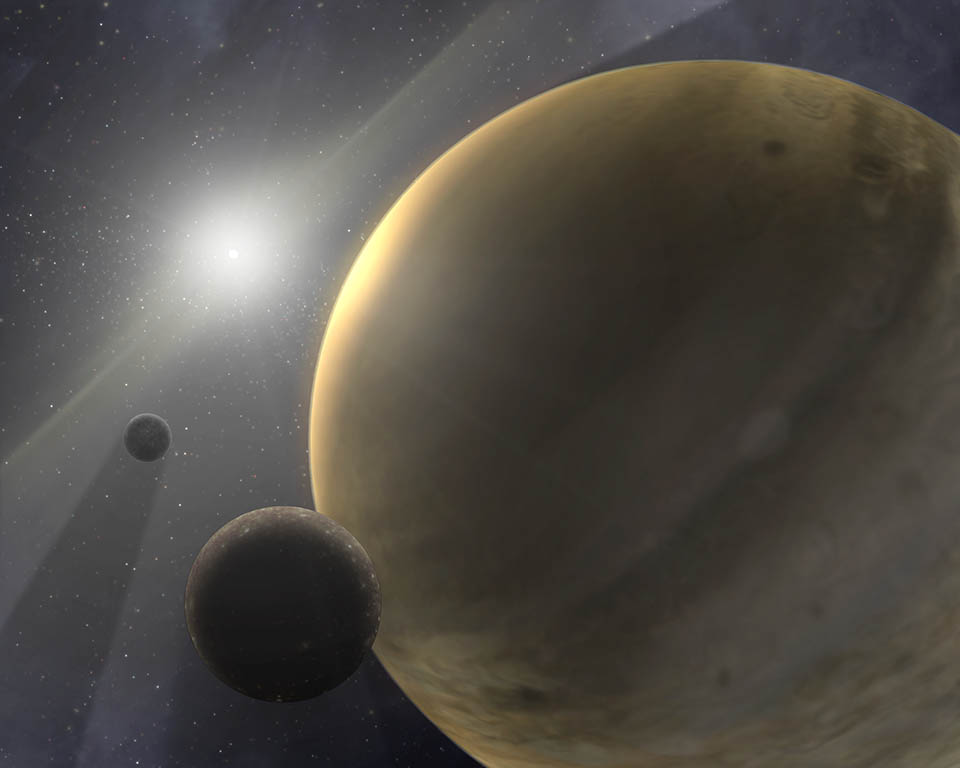Gas giant exoplanet with weirdly long orbit may bear clues about our solar system

Scientists have managed to measure both the size and orbit of a gas giant exoplanet nearly 1,300 light-years away from Earth. Dubbed GOT 'EM-1b, which stands for Giant Outer Transiting Exoplanet Mass, the planet is roughly five times the mass of Jupiter.
Usually scientists struggle to measure the size of giant gas planets, like Jupiter and Saturn, because they're far away from the stars they orbit. Yet, this planet showed up in what researchers call our "solar neighborhood" in 2010, when NASA's Kepler space telescope first discovered the object. Astronomers then noticed periodic decreases in the brightness of a nearby star, called Kepler-1514, which clued the researchers in to the possibility of orbiting planets.
The research team at the University of California, Riverside discovered that the planet, officially named Kepler-1514b after its parent star, has an unusually long orbit of 218 days. "Taking 218 days to orbit a star is an order of magnitude longer than most giant exoplanets we've measured," Paul Dalba, the astronomer who led the research, said in a UC Riverside statement provided to Space.com. Of the thousands of planets Kepler has discovered, only a few dozen have had orbits of 200 days or longer.
Related: 7 greatest alien planet discoveries by NASA's Kepler spacecraft
It's possible that learning more about GOT 'EM-1b and giant planets like it could tell us more about the solar system. "This planet is like a stepping stone between the giant planets of our own solar system, which are very far from our sun, and other gas giants that are much closer to their stars," Dalba said.
The discovery of a giant planet that hasn't moved closer to its star over time will serve as an analog to the gas giants in our solar system and tell us about how normal our solar system is in its stability and development. Astronomers believe that Jupiter might be protecting Earth from other objects in space that might otherwise impact our planet, giving our "blue marble" relative stability.
Unfortunately, it's difficult to find analogs to Jupiter and Saturn, so scientists are excited to learn more about GOT 'EM-1b.
Get the Space.com Newsletter
Breaking space news, the latest updates on rocket launches, skywatching events and more!
Dalba and his team presented their research at the 237th meeting of the American Astronomical Society and have detailed their discovery in a paper accepted for publication in the Astronomical Journal.
Follow Kasandra Brabaw on Twitter @KassieBrabaw. Follow us on Twitter @Spacedotcom and on Facebook.
Join our Space Forums to keep talking space on the latest missions, night sky and more! And if you have a news tip, correction or comment, let us know at: community@space.com.

Kasandra Brabaw is a freelance science writer who covers space, health, and psychology. She's been writing for Space.com since 2014, covering NASA events, sci-fi entertainment, and space news. In addition to Space.com, Kasandra has written for Prevention, Women's Health, SELF, and other health publications. She has also worked with academics to edit books written for popular audiences.









